The Center for Genomic Gastronomy
The Center for Genomic Gastronomy explores “the political, technological and cultural contexts of what we consume.” Through research, and experimentation, it creates thoughtful provocations and reflections on human food systems presented as exhibitions, meals, public lectures and publications.
The Center for Genomic Gastronomy explores the biotechnologies and biodiversity of human food systems. According to Cat Kramer, a co-founder with Zach Denfield, it examines “the political, technological and cultural contexts of what we consume.” Through research, and experimentation, it creates thoughtful provocations and reflections on human food systems presented as exhibitions, meals, public lectures and publications.
What is most interesting about the Center’s programs is that they start from a common denominator: using food as a way to bridge communities, as a way to bridge concerns about science and technology, as a way to create conversations about alternative futures, and as a way of stimulating new art forms and experiences. These experiences take many forms: the creation of artifacts and objects, a journal that examines the intersections of different forms of food culture; and dinners and events.
Despite being a small core team, they work in a very networked way and developed a strong relationship with a variety of collaborators. Collaborators are in many different countries, different kinds of institutions and each brings their own “flavor” – enabling the Center to achieve different forms of projects and outcomes.
Spice Mix Super Computer
A great example of this approach and of their work is the Spice Mix Super Computer. Commissioned by the Abandon Normal Devices festival in Manchester, England in 2012, it is ‘a traveling cooking demonstration that attempts to blend every spice combination possible on earth.’ It does this through a mobile ‘olfactory synthesiser’ which lets you combine and compare the smells of a diverse range of spices. This project gets to the heart of their creativity and the blended insights that they produce. In the sense that haphazard, unexpected combinations can produce new, interesting, and surprisingly influential outcomes, the Spice Mix Super Computer serves as both a good metaphor for what they do and also the practice of interdisciplinary collaboration itself.
Telling Complex Stories
The Center for Genomic Gastronomy wants to tell a more complex story about the future and how society, technology, and culture shape our relationships with food. The Center tends to highlight new technologies and agricultural processes such as genetically modified foods or mutation breeding because these technologies tend to make society’s hopes, fears, and desires more visible.
These are complex, emotive issues and people will often have strong, visceral reactions to technologies like genetic modification, particularly when it’s in the context of food consumption. Through work like this, the Center is exploring people’s values and assumptions in ways that are really smart. They expose people to the moral foundations food evokes: notions like purity, fairness, and identity. These are sensitive issues for many people, but part of the reason for the Center’s success, is that they aren’t prescriptive, dogmatic or didactic. Instead they create well-crafted imagery and objects that allow anyone to explore and consider food systems through a shared, lived experience.
The content itself introduces science and technology in an accessible way and through familiar avenues. For example, ‘Glowing Sushi’ creates an episode of a hypothetical cookery show where they cook with genetically modified glowing fish, a real and currently available product [see glofish.com]. It offers a format for people to get engaged, particularly in the scientific questions, and begin asking "What if?" and "How does this work?" That becomes a way for people to drive the questioning themselves about what the technology means and what these new menu items mean to society.
They are creating a safe space for people to ask those kinds of questions and to learn more about how these emerging issues shape food production and consumption. By talking about something fictional or in the future, people don’t have the same emotional commitments – either philosophical or emotional - ultimately they don't know how to react and it disarms them. This helps people remain more open to a different array of possibilities. Getting people into that space is a good first step for helping them to understand the process of innovation. The Center for Genomic Gastronomy is using creative techniques to stimulate and new ideas and new social combinations.
Revealing Aesthetic Decisions
Whether it is creating monoculture of orange carrots or raising a specific species of sheep, aesthetic decisions surround food consumption and production everyday. This is core to the history of agriculture. Science is now involved in those decisions, especially in situations like genetic modification. The Center for Genomic Gastronomy is helping people become more aware and knowledgeable about what it means to practice artificial selection on different species. Using speculative futures, they create visual “evidence” that can reveal those aesthetic decisions.
More than that, they help go beyond the realms of scientific exploration to consider how new technologies intersects with society, in big and in small, or unseen ways. Fundamentally, they are asking ‘what kind of society do we really want to live in?’ and ‘what kind of foods and food production do we and don’t we want to see in the world’. This work might not necessarily impact the domain of science directly, but these are the kinds of questions that become increasingly valuable as scientific innovations becomes more broadly applied.
Further Reading
- The Center for Genomic Gastronomy website- http://genomicgastronomy.com/
- Spice Mix Super Computer - http://genomicgastronomy.com/work/projects/spice-mix-super-computer/
- Glowing Sushi - http://genomicgastronomy.com/work/projects/glowing-sushi/
- Edible Exhibition Q&A with the Curators - http://genomicgastronomy.com/texts/edible-exhibition-q-a-with-the-curators/
- Realism and Expressionism in Speculative Food Design - http://genomicgastronomy.com/texts/speculative-food-design/
- Talk at TEDxDublin - Zack Denfeld and Cat Kramer - Genomic Gastronomy - http://www.youtube.com/watch?v=w51FmxbFiFA
- Zach Denfeld, How to Eat a GMO, Talk at Ignite Portland - http://www.youtube.com/watch?v=JhJ0MsOGqpo
No comments yet. Why not add the first?
Acknowledgements & Credits
Zach Denfeld & Cat Kramer, 2010 - date
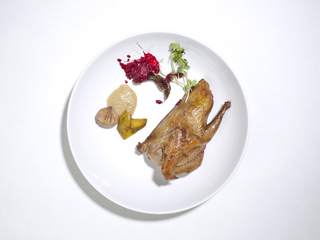
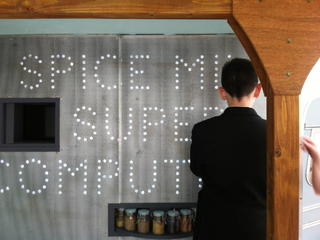

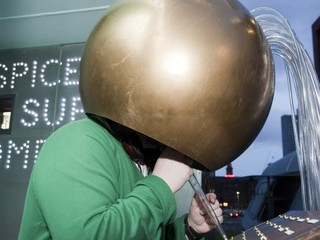
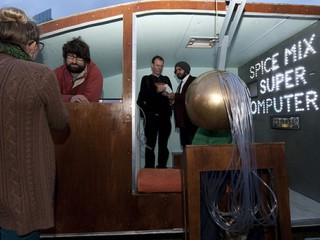
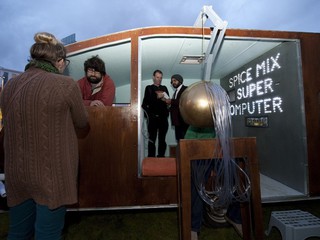
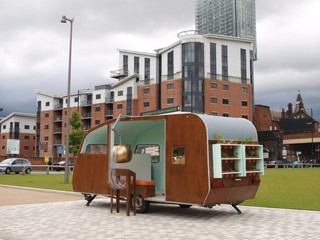
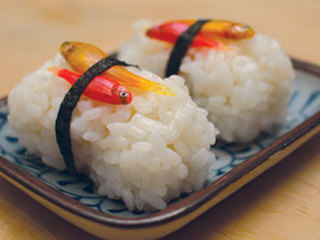
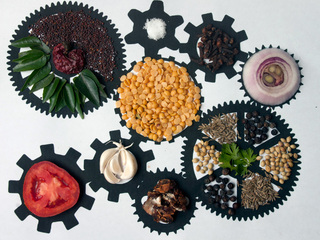

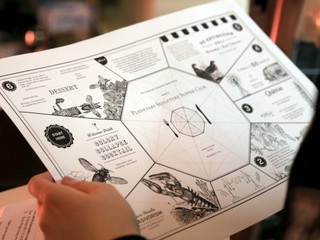
← Back to work
0 Comments